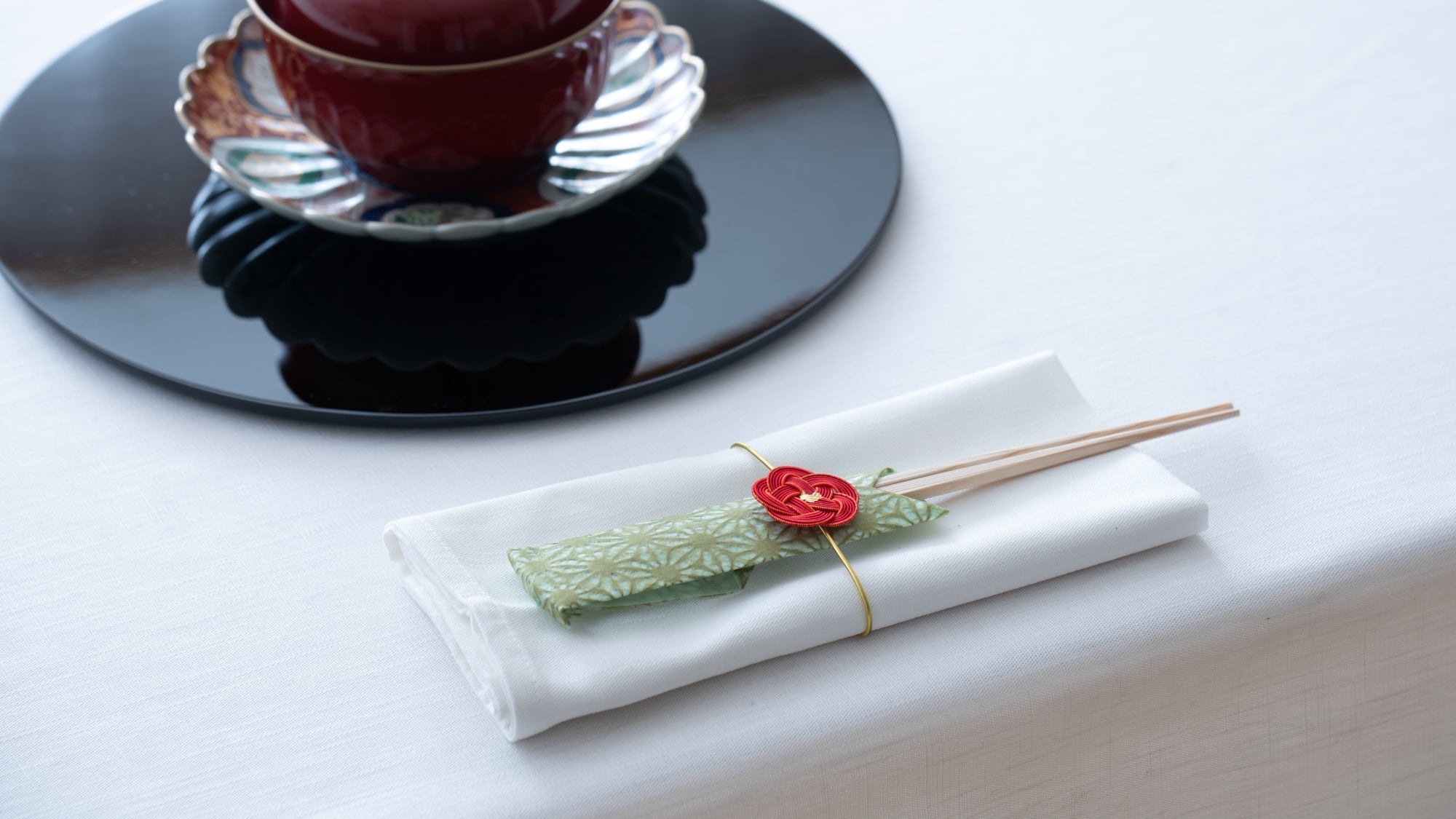
What is "Iwai-bashi"? The special festival chopsticks
Written by Team MUSUBI
tables of contents
About "Iwai-bashi"

They are made from willow wood, which is difficult to break, and are thicker in the middle and thinner at both ends. It is said that the reason why both ends of Iwai-bashi are thin is because one end is used by the gods, and it was thought to bring blessings to the gods by receiving the same chopsticks as the gods.
The length is generally about 24cm/9.4in, which is "8 suns (=Hassun)" according to the Japanese length counting system. This is due to the fact that the Chinese character for "eight" is the shape of a spreading end, which is considered auspicious.
Iwai-bashi is usually not left bare, but are packaged in a chopstick bag with the word "Kotobuki" (meaning "longevity" in Japanese) and a festive color such as vermilion or gold. Chopstick bags are available in a variety of designs, so you can choose the one that best suits your taste.
When is Iwai-bashi used?

Iwai-bashi is also used for the ceremony called "Okuizome (first meal)," the Japanese traditional ritual that parents perform around the 100th day after the birth of their baby along with their relatives and friends to wish the infant will never starve by sharing a celebratory meal.
Traditional customs of Iwai -bashi
It is proper etiquette to wash the Iwai-bashi used on New Year's Day after eating, return them to the chopstick bag, and use the same chopsticks until January 7. They are not disposable and can be used repeatedly.
Since festive chopsticks are good luck charms, it is a traditional custom to take them to a shrine and burn them together with New Year's decorations during "Donto Yaki," a ritual to collect and burn New Year's decorations at a shrine on January 15. When disposing of them at home, it is suggested that they be purified with salt before disposal.
Celebrate with a Fresh Spirit
In Japan, Iwai-bashi is lined up in supermarkets during the New Year season. There are often more guests at celebrations, and it is not easy to have beautiful chopsticks for all of them. It is very convenient to have Iwai-bashi that are easy and glamorous and suit the auspicious setting. Even if you prepare more than enough Iwai-bashis and have some left over, you can use them again for other celebrations, so they will not go to waste. Add them to your table setting for special entertaining.
Introducing the Hirohashi chopsticks! Made of Yoshino cedar, these chopsticks have a beautiful design with a tapered tip, a characteristic of festive chopsticks, and are perfect for special occasions. The Mizuhiki on them allows you to use them again and again, making them a truly sustainable choice. Although small in size, this item is an eye-catching decoration with a subtle, elegant look.









Leave a comment
This site is protected by hCaptcha and the hCaptcha Privacy Policy and Terms of Service apply.